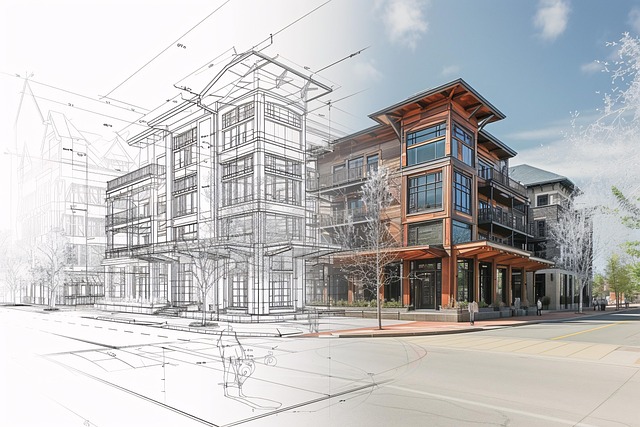Industrial air doors are robust, heavy-duty solutions for controlled access in harsh conditions, enhancing safety and operational efficiency in warehouses, factories, and climate-regulated facilities. Equipped with motion sensors, these doors automate entry points, detecting human presence or vehicle proximity to control air curtains, cold storage doors, and HVAC management. Benefits over traditional systems include improved productivity, reduced energy waste, and lower costs. Strategic sensor placement and door type selection transform industrial spaces into efficient, sustainable environments, with future advancements promising advanced technology and seamless integration with smart building systems.
“Revolutionize your facility’s airflow management with automatic industrial air doors—a game-changer for modern manufacturing. This article explores how motion sensors are transforming industrial door automation, enhancing efficiency and safety. From understanding the basics of industrial air doors to delving into the technology behind motion sensors, we uncover the advantages and potential applications. Discover how this innovative system can streamline operations, improve energy efficiency, and create a safer work environment, shaping the future of industrial door solutions.”
- Understanding Industrial Air Doors and Their Applications
- The Role of Motion Sensors in Door Automation
- Advantages, Implementation, and Future Prospects of Motion-Activated Industrial Air Doors
Understanding Industrial Air Doors and Their Applications

Industrial air doors are specialized door systems designed to provide efficient and controlled access in various industrial settings. These doors are engineered to withstand harsh conditions, offering robust solutions for warehouse opening protection, factory entrance solutions, and industrial climate separation. By employing heavy-duty materials and advanced mechanisms, they ensure secure entry while facilitating smooth operational flows.
The applications of industrial air doors extend to critical areas such as loading docks, cold storage facilities, and manufacturing environments, where maintaining temperature control, minimizing energy loss, and ensuring safety are paramount. As versatile components in the broader category of industrial entrance barriers, these doors come in various forms, including large opening air curtains and HVAC barriers, catering to diverse needs across different industries.
The Role of Motion Sensors in Door Automation

In today’s industrial landscape, efficient and automated door systems are integral to optimizing operations. Motion sensors play a pivotal role in this automation process, particularly for industrial air doors. These advanced sensors act as intelligent guardians, detecting human presence or vehicle proximity, ensuring seamless access while maintaining control over the entry points. When integrated into manufacturing door systems or warehouse opening protection mechanisms, motion sensors trigger the automatic opening of heavy-duty air doors, large opening air curtains, and cold storage air doors, respectively.
This technology not only enhances productivity by eliminating the need for manual operation but also contributes to improved safety in factories and industrial settings. By acting as a sophisticated barrier at entrances like loading dock barriers or factory entrance solutions, motion sensors enable effective industrial climate separation, warehouse management, and HVAC (Heating, Ventilation, and Air Conditioning) control. They are essential components in the quest for efficient, secure, and climate-regulated environments, making them indispensable in various industrial applications, from cold storage facilities to bustling manufacturing floors.
Advantages, Implementation, and Future Prospects of Motion-Activated Industrial Air Doors

Automatic industrial air doors that activate via motion sensors offer significant advantages over traditional manual or timer-based systems. Firstly, they enhance operational efficiency by eliminating the need for manual operation, reducing human error and increasing door cycle speed. This is particularly beneficial in fast-paced manufacturing environments where quick loading and unloading are crucial. Secondly, motion sensors ensure optimal energy usage as doors only activate when necessary, minimizing power waste compared to constantly running systems. This feature not only reduces operational costs but also contributes to a more sustainable industrial landscape.
In terms of implementation, integrating motion-activated industrial air doors requires careful consideration of the facility’s layout and workflow. Sensors should be strategically placed to capture the desired areas of coverage without causing false activations. Moreover, selecting the appropriate door type is essential; heavy-duty air doors are ideal for harsh conditions, while large opening air curtains offer versatile protection for wide openings. Manufacturing door systems that incorporate these features can transform various industrial spaces, from warehouses and loading docks to cold storage facilities and factories, into efficient, climate-controlled environments. Looking ahead, future prospects include advanced sensor technology enabling more precise control, customizable automation sequences, and seamless integration with smart building management systems.
Automatic industrial air doors activated by motion sensors are a game-changer in enhancing productivity and safety. By leveraging motion sensor technology, these doors offer numerous advantages such as improved efficiency, reduced energy consumption, and enhanced workplace comfort. As the demand for smart factories and automated processes grows, motion-activated industrial air doors are poised to become an indispensable component of modern manufacturing landscapes. Their implementation promises a future where seamless workflow and optimal environmental control go hand in hand.






